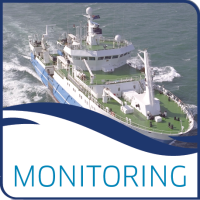These layers describes temporal and spatial patterns of density for seabird and marine mammal species in the eastern waters of Scotland from digital aerial surveys. This is important in order for the Government to make evidence-based decisions regarding the status of these species and management.
This resource is composed of 143 shapefiles that describe the density of ten species of seabirds and three species of marine mammals across eleven months of the year (excludes May).
Species distribution maps available
Seabirds
Northern fulmar
Northern gannet
Great skua
Common gull
Herring gull
Great black backed gull
Black-legged kittiwake
Common guillemot
Razorbill
Atlantic puffin
Lesser black backed gull (abundance only)
Marine mammals
White beaked dolphin
Harbour porpoise
Minke whale
Data and Resources
- Distribution Models for Atlantic Puffinzip
Seabird and marine mammal modelled distribution files – 2022. Metadata....
Download - Distribution Models for Black-legged kittiwakezip
Seabird and marine mammal modelled distribution files – 2022. Metadata....
Download - Distribution Models for Common guillemotzip
Seabird and marine mammal modelled distribution files – 2022. Metadata....
Download - Distribution Models for Common Gullzip
Seabird and marine mammal modelled distribution files – 2022. Metadata....
Download - Distribution models for Great black backed gull zip
Seabird and marine mammal modelled distribution files – 2022. Metadata....
Download - Distribution models for Great skuazip
Seabird and marine mammal modelled distribution files – 2022. Metadata....
Download - Distribution models for Harbour porpoisezip
Seabird and marine mammal modelled distribution files – 2022. Metadata....
Download - Distribution models for Herring gullzip
Seabird and marine mammal modelled distribution files – 2022. Metadata....
Download - Distribution models for Minke Whalezip
Seabird and marine mammal modelled distribution files – 2022. Metadata....
Download - Distribution models for Northern Fulmarzip
Seabird and marine mammal modelled distribution files – 2022. Metadata....
Download - Distribution models for Northern Gannetzip
Seabird and marine mammal modelled distribution files – 2022. Metadata....
Download - Distribution models for Razorbillzip
Seabird and marine mammal modelled distribution files – 2022. Metadata....
Download - Distribution models for Razorbillzip
Seabird and marine mammal modelled distribution files – 2022. Metadata....
Download - Distribution models for White beaked dolphin2zip
Seabird and marine mammal modelled distribution files – 2022. Metadata....
Download
| Field | Value |
|---|---|
| Publisher | |
| Modified | 2023-01-17 |
| Release Date | 2023-01-16 |
| Identifier | b94f03bc-421b-4b50-8c49-0fae6a6d4b4b |
| Spatial / Geographical Coverage Area | POLYGON ((-3.076171875 56.440481239693, -3.076171875 60.99642075045, 3.603515625 60.99642075045, 3.603515625 56.440481239693)) |
| Temporal Coverage | 2020-02-02 to 2022-11-18 |
| Language | English (United Kingdom) |
| License | UK Open Government Licence (OGL) |
| Granularity | Monthly |
| Data Dictionary | he data were collected in the form of temporally and spatially indexed photos from planes collected between February 2020 and March 2021 by APEM Ltd. APEM’s camera system was fitted into a twin-engine P68 Ravenair aircraft. The plane surveyed at a height of 2,000 feet and a ground speed of 120 knots (138 mph). The aerial digital surveys captured images along ten transects spaced in a saw tooth pattern to achieve full coverage across the targeted area east of Scotland. Data collected approximately two-centimetre ground sample distance (GSD) digital still images. The transect swathe was 960 metres, images were collected continuously (abutting digital still imagery) along the ten transects. The image sea surface area covered was 194 km2, representing 1.5% coverage of the wider surface area. Flights were made in sea states less than 4 on the Beaufort scale. At the spatial modelling stage of the project, animal numbers were modelled considering environmental and biological inputs of potential relevance. Only predictors that can be assigned to all the relevant effort and sightings data were used. |
| Contact Name | Marine Scotland |
| Contact Email | |
| Public Access Level | Public |


